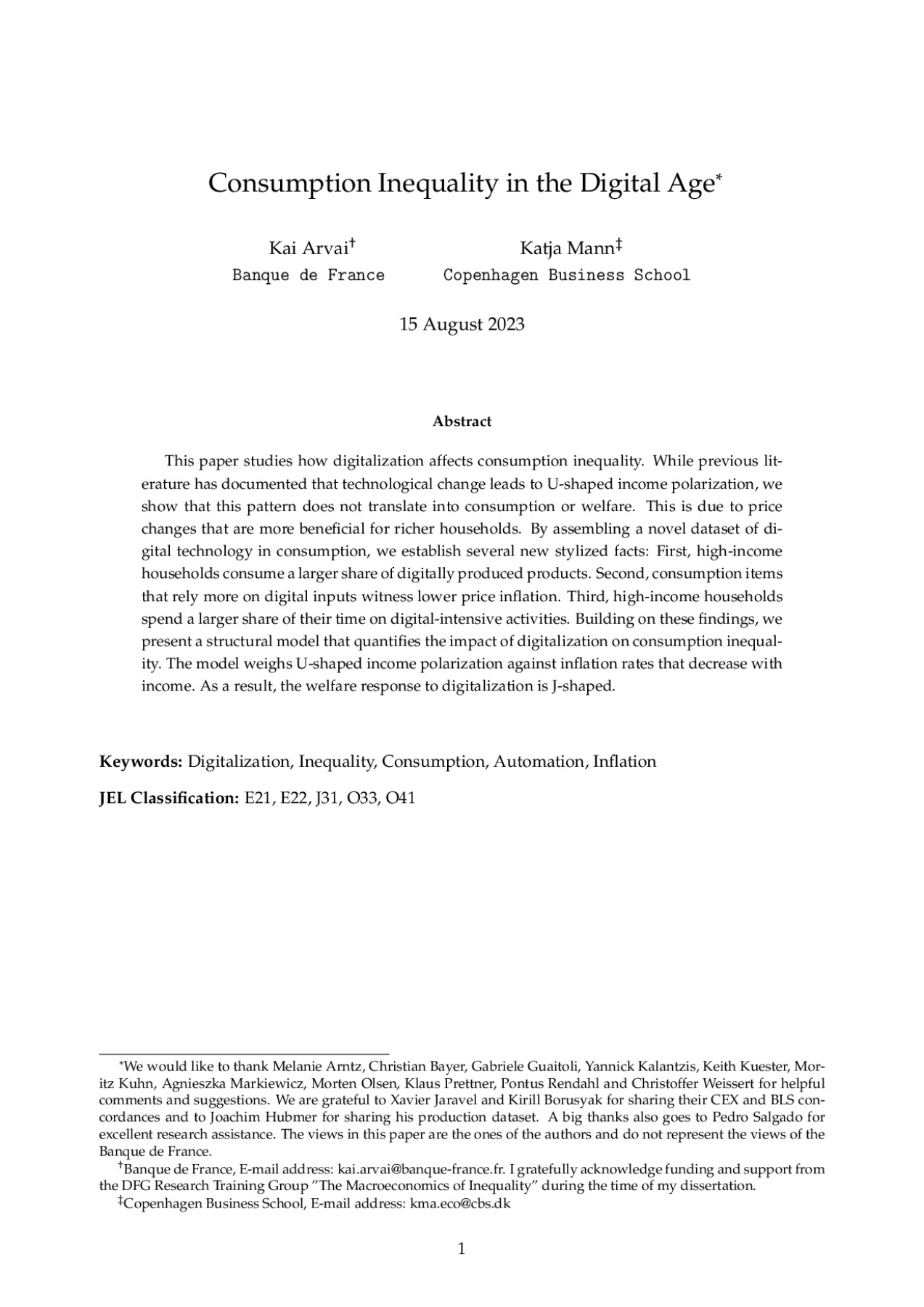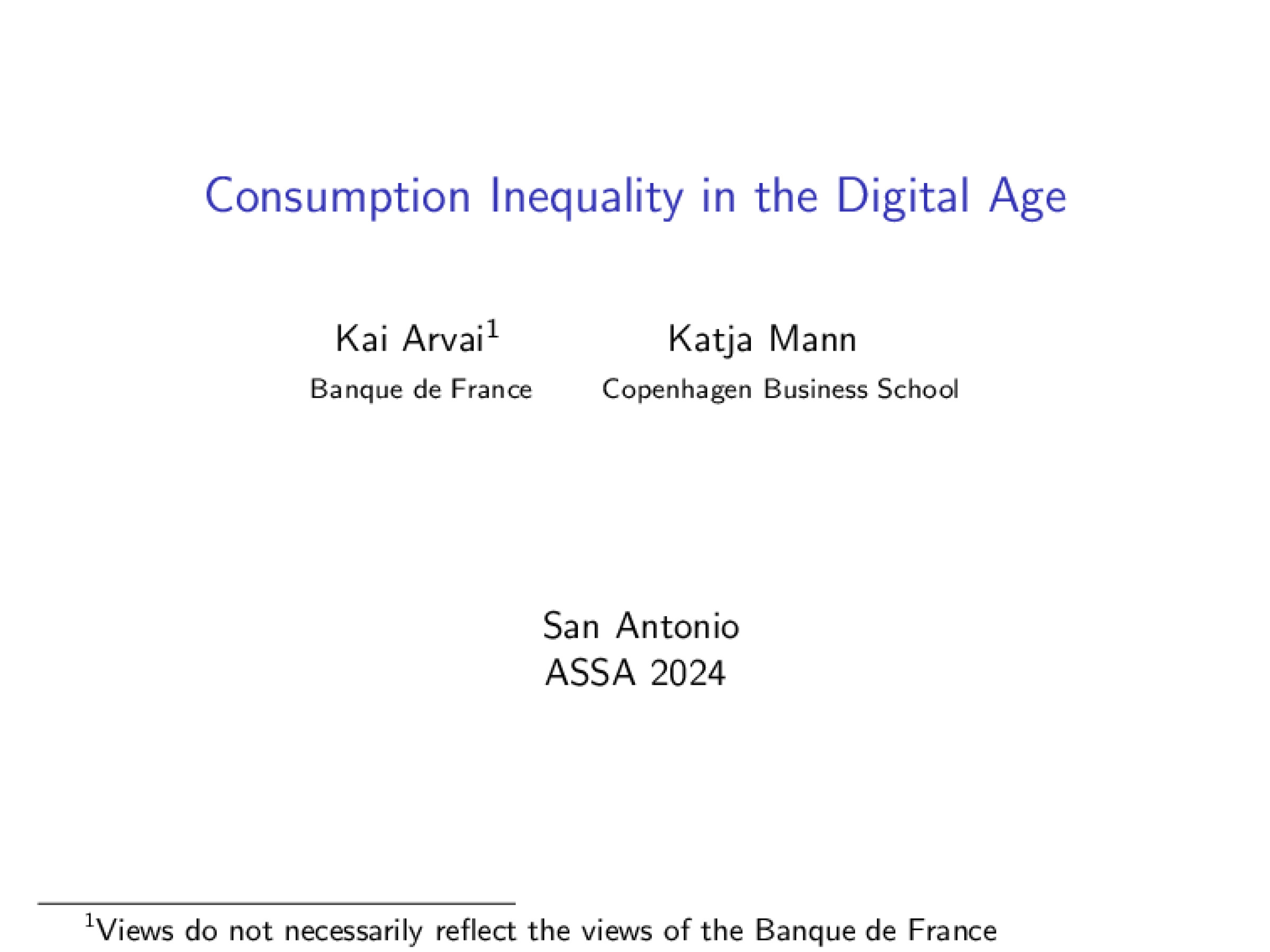2024 North American Winter Meeting, San Antonio, Texas: January, 2024
Consumption Inequality in the Digital Age
Kai Arvai
This paper studies how digitalization affects consumption inequality. While previous literature
has documented that technological change leads to U-shaped income polarization, we
show that consumption and welfare responses resemble a J-shape. This is due to changes in
consumer prices, which are more favorable for high earners. By assembling a novel dataset
of digital technology in consumption, we establish that high-income households consume a
larger share of digitally produced products, and that these products witness lower inflation. In
a structural model that jointly considers income and price changes, we quantify the impact of
digitalization on consumption inequality between 1960-2017.
has documented that technological change leads to U-shaped income polarization, we
show that consumption and welfare responses resemble a J-shape. This is due to changes in
consumer prices, which are more favorable for high earners. By assembling a novel dataset
of digital technology in consumption, we establish that high-income households consume a
larger share of digitally produced products, and that these products witness lower inflation. In
a structural model that jointly considers income and price changes, we quantify the impact of
digitalization on consumption inequality between 1960-2017.
Preview























































































































